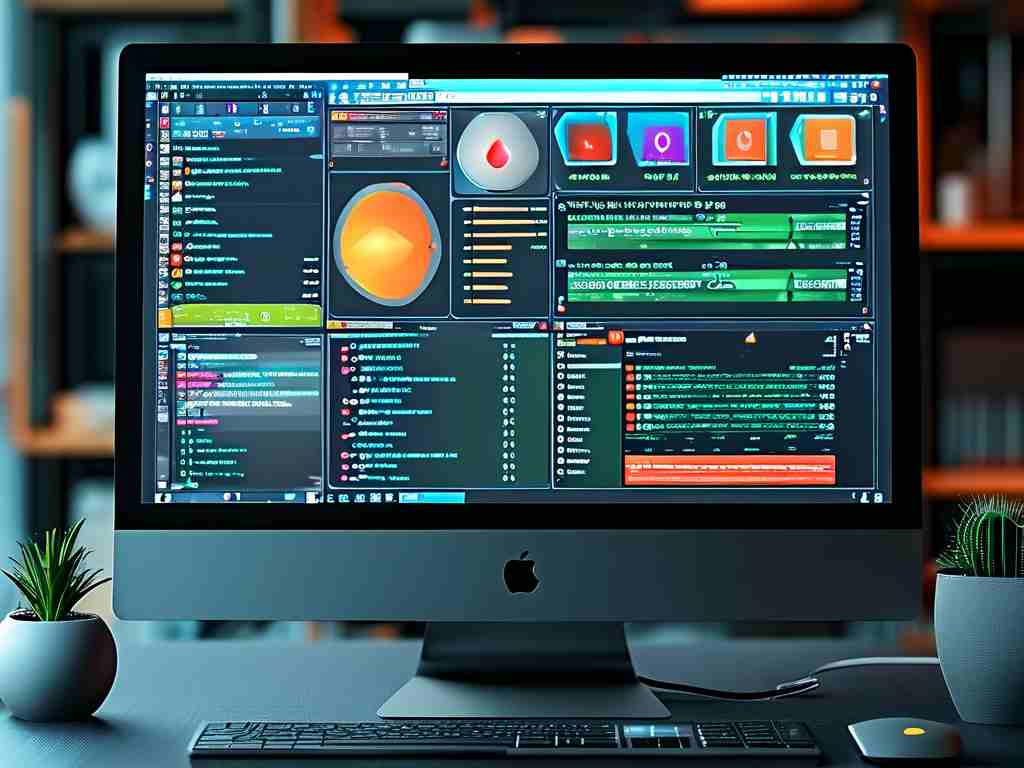Industrial automation relies on invisible brains: the software embedded within Programmable Logic Controllers (PLCs), Human-Machine Interfaces (HMIs), Remote Terminal Units (RTUs), and dedicated industrial computers. Developing this Embedded Industrial Control Software (EICS) is a discipline demanding a unique blend of skills, far removed from standard desktop or mobile application development. It merges rigorous software engineering principles with deep hardware understanding and the uncompromising demands of industrial environments. Success hinges on mastering real-time constraints, achieving unparalleled reliability, and ensuring deterministic behavior in the face of physical world interactions.

Unlike conventional software, EICS operates under severe constraints. Resources like processing power, memory (both RAM and persistent storage), and often power, are strictly limited. The software must perform predictably within these confines. More critically, real-time performance is non-negotiable. A control loop regulating motor speed or chemical flow must execute within a guaranteed timeframe, every single time. Missing a deadline isn't just a performance hiccup; it can lead to catastrophic process failure, equipment damage, or safety hazards. This necessitates the use of Real-Time Operating Systems (RTOS) or even bare-metal programming approaches where the software runs directly on the hardware without an OS layer, ensuring maximum determinism. Scheduling algorithms prioritize critical control tasks absolutely.
Reliability and robustness are paramount. Industrial systems often run 24/7 for years. Unexpected reboots or crashes are unacceptable. EICS must be resilient against electrical noise, voltage fluctuations, extreme temperatures, humidity, and vibration – common occurrences in factories, power plants, or outdoor installations. Techniques like watchdog timers (hardware circuits that reset the system if software fails to periodically 'kick' them), redundant systems, comprehensive error detection, and graceful degradation strategies are fundamental. Memory management becomes critical; dynamic memory allocation (malloc/free) is often avoided or used with extreme caution due to fragmentation risks over long periods, favoring static allocation or robust memory pools instead. Consider this simplified conceptual structure for a real-time task controlling a valve:
typedef struct {
float Setpoint; // Desired flow rate
float ActualValue; // Current sensor reading
float Kp, Ki, Kd; // PID tuning parameters
float IntegralError; // Accumulated error
float LastError; // Previous error for derivative
} PID_Controller;
void ValveControlTask(void *pvParameters) {
PID_Controller *pid = (PID_Controller *)pvParameters;
TickType_t xLastWakeTime = xTaskGetTickCount();
const TickType_t xPeriod = pdMS_TO_TICKS(10); // Execute every 10ms
for(;;) {
// 1. Read sensor input (ActualValue) - Critical timing!
ReadFlowSensor(&pid->ActualValue);
// 2. Calculate PID output
float error = pid->Setpoint - pid->ActualValue;
pid->IntegralError += error;
float derivative = (error - pid->LastError) / 0.01; // Assuming 10ms period
pid->LastError = error;
float output = (pid->Kp * error) + (pid->Ki * pid->IntegralError) + (pid->Kd * derivative);
// 3. Apply output to valve actuator (e.g., PWM signal)
SetValvePosition(output);
// 4. Wait exactly until next period (RTOS delay until)
vTaskDelayUntil(&xLastWakeTime, xPeriod);
}
}
Communication protocols form the nervous system of industrial automation. EICS must implement specialized industrial protocols like Modbus (RTU or TCP), CANopen, PROFINET, EtherNet/IP, or OPC UA (Unified Architecture). These protocols handle data exchange between controllers, sensors, actuators, and SCADA systems, often prioritizing determinism and reliability over raw speed. Implementing these protocols efficiently requires low-level understanding of network stacks, serial communication (UART), and sometimes fieldbus hardware. Security, historically an afterthought in Operational Technology (OT), is now critical. EICS developers must design in security from the ground up, incorporating secure boot, encrypted communications, access control, and regular patch management strategies to protect critical infrastructure from cyber threats. The convergence of IT and OT networks (Industrial IoT - IIoT) amplifies this need.
The development lifecycle for EICS incorporates unique phases. Requirements gathering is exceptionally detailed, involving safety standards (like IEC 61508 for functional safety, leading to SIL ratings, or ISO 13849 for machinery), precise timing specifications, and fail-safe behavior definitions. Hardware-Software Co-Design is crucial; software architects must work intimately with hardware engineers, influencing processor selection, peripheral usage (ADCs, DACs, timers, communication interfaces), and board design. Testing is rigorous and multi-layered:
- Unit Testing: Testing individual software modules, often on simulation frameworks or hardware emulators.
- Hardware-in-the-Loop (HIL) Testing: Connecting the real controller hardware to a simulator that models the physical process (motors, tanks, conveyors) electronically. This tests the integrated software and hardware under realistic, controlled, and safe conditions before connecting to actual machinery.
- Integration Testing: Verifying communication between different system components (e.g., PLC to HMI, PLC to drive).
- System Testing: Testing the entire control system with the actual machinery in a controlled environment.
- Field Testing: Final validation in the real operational environment. Debugging often requires specialized tools like JTAG debuggers, logic analyzers, oscilloscopes, and protocol analyzers to probe low-level hardware/software interactions.
The landscape of EICS development is continuously evolving. The rise of Industrial IoT (IIoT) demands connectivity to cloud platforms for data analytics and remote monitoring, requiring secure web protocols (HTTPS, MQTT) and edge computing capabilities within controllers. Modern approaches increasingly leverage Linux-based systems alongside or instead of traditional RTOS, offering richer networking and user interface capabilities, though often requiring careful real-time enhancements (PREEMPT_RT patches) or separation of critical real-time tasks (e.g., using Xenomai or a dedicated MCU co-processor). Model-Based Design (MBD) tools like Simulink/Stateflow are gaining traction, allowing engineers to design, simulate, and automatically generate code for complex control logic, potentially reducing hand-coding errors and improving verification. Standards like IEC 61131-3 (defining programming languages like Ladder Logic, Function Block Diagram, Structured Text) remain dominant in PLC programming, but C/C++ is pervasive for lower-level firmware and complex algorithms, while Python is increasingly used for tools, testing, and higher-level IIoT integration tasks on more powerful gateways.
Mastering embedded industrial control software development requires a rare synergy. Developers must be adept low-level programmers (C/C++, often assembly for critical routines), understand electronics and hardware interfacing (datasheets, schematics), grasp real-time computing theory, be proficient with industrial networks and protocols, prioritize reliability and safety above all else, and rigorously test within complex hardware/software ecosystems. It's a demanding field, but essential for powering the automated world around us, from manufacturing and energy to transportation and building management. As a 2023 ARC Advisory survey highlighted, over 68% of new industrial controller deployments now incorporate some level of IIoT connectivity, fundamentally altering the skillset required for the next generation of EICS developers who must bridge the once-separate worlds of OT reliability and IT connectivity. The challenge lies in embracing these new paradigms without compromising the core tenets of determinism and robustness that define industrial control.









